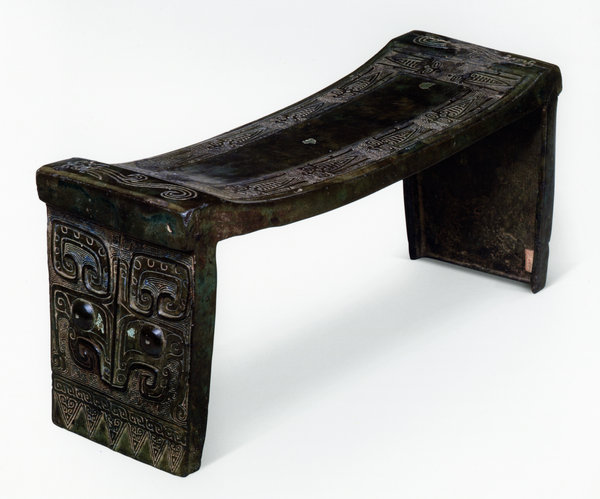 |
|
A Shang Dynasty bronze table for sacrificial rituals.[Photo provided to China Daily] |
New volume of book series features Chinese antiquities collected by a prominent Japanese business family, Lin Qi reports.
More than a year after it published the first volume of the book series Selected Overseas Chinese Cultural Relics, the National Museum of China issued a second book in late April.
The latest in the set catalogs nearly 200 Chinese antiquities kept at Sen-oku Hakuko Kan, a Kyoto-based museum, with a branch in Tokyo. The NMC project started in 2005, when overseas museums with significant Chinese cultural collections were contacted.
Going by the first two volumes, it seems likely that the book series will dedicate one volume each of its planned many to a partner museum.
While the first book talks of 195 pieces of art saved at the London-based Victoria and Albert Museum from its collection of more than 18,000 Chinese antiquities, the new volume offers a glimpse into the Japanese museum's treasure trove of Chinese art gathered since the beginning of the 20th century.
Sen-oku Hakuko Kan houses and exhibits the art collections of the Sumitomos, a family that has accumulated wealth in copper mining and smelting since the 16th century. Among their most famous art possessions are ancient Chinese bronze vessels and mirrors, which are considered one of the best in quality outside China.
At first members of the Sumitomo family bought artworks as decorations when receiving business guests. Then they sponsored Japanese painters to study in Europe in the Meiji era (1868-1912) and also purchased many European paintings, according to Konan Ichiro, director of Sen-oku Hakuko Kan.
The Sumitomos collected bronze wares of Shang (c.16th century-11th century BC) and Zhou (c.11th century-256 BC) dynasties and later, paintings of Ming (1368-1644) and Qing (1644-1911) dynasties like works by master painter Zhu Da, who is better known by his pseudonym Bada Shanren.
The Japanese museum was established in 1960 following a donation from the family's collection, ranging from Chinese antiques to Japanese paintings, ceramics, calligraphy and other artworks.
|
|
|
|
|
|
|
|
